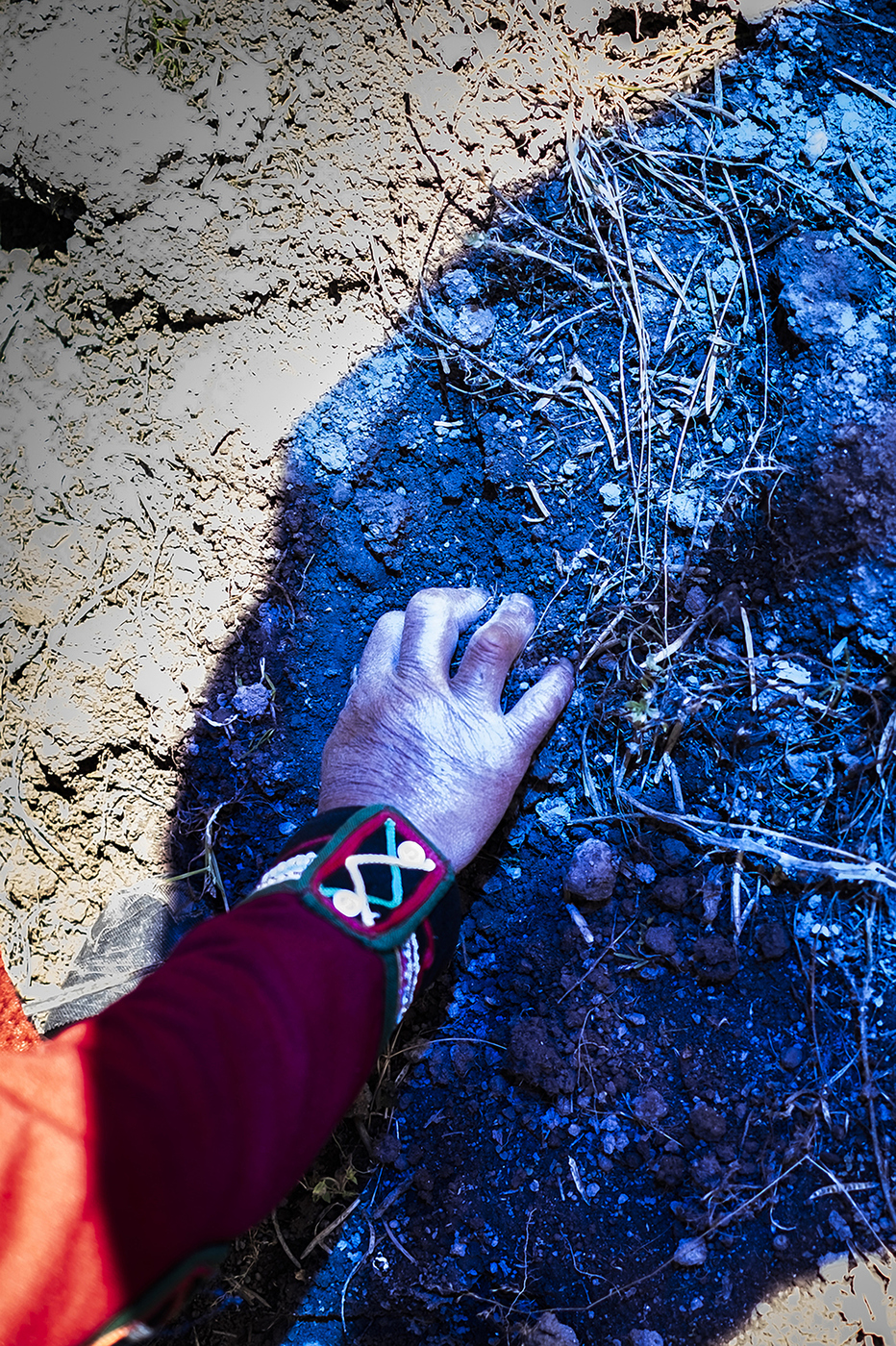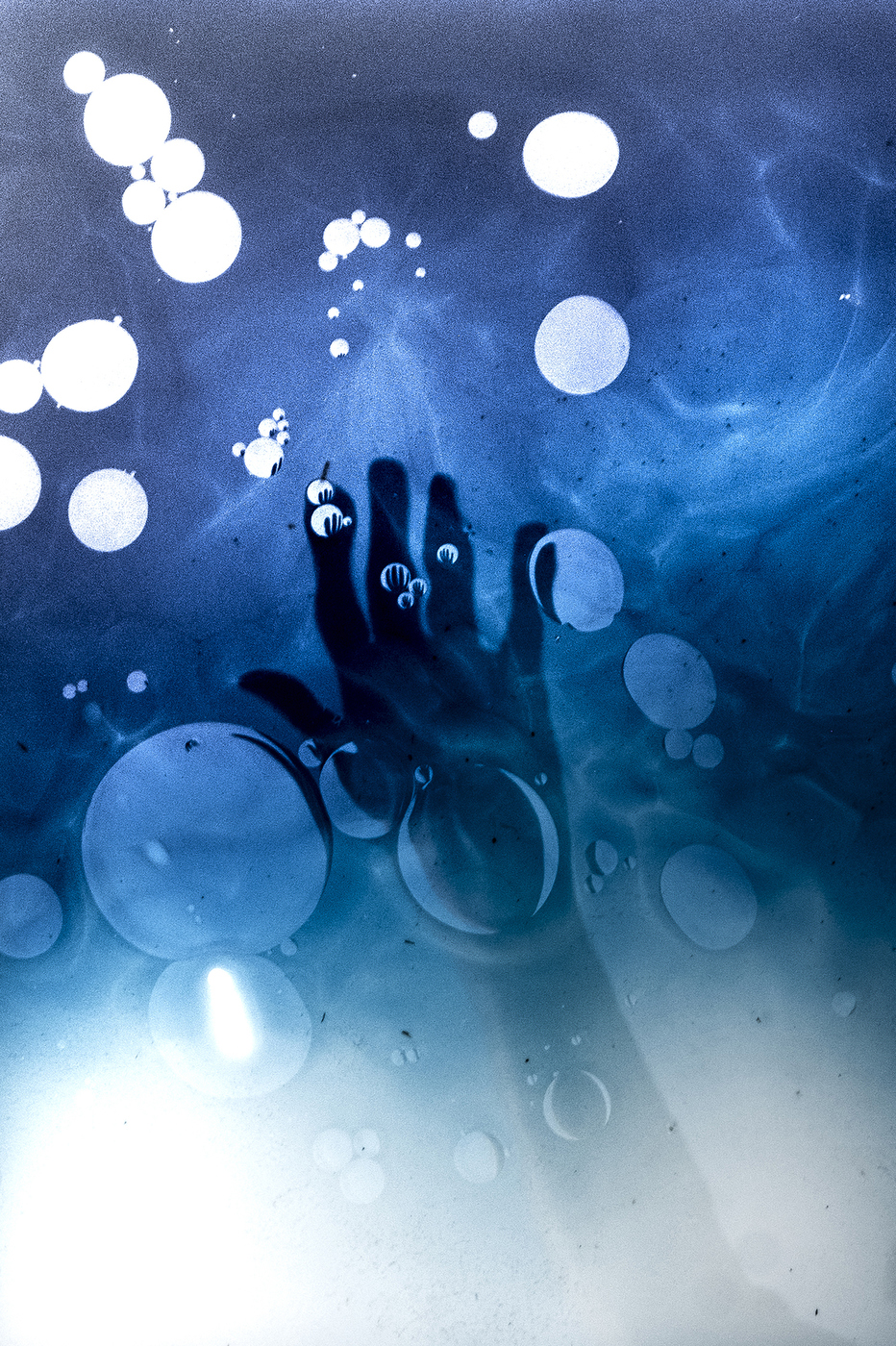A dream in blue
What happens when a color disappears?
A Dream in Blue plays with the possibility of a world without blue and the dream of coloring it with this color again.
Blue, a color that expresses the link between the world below and the world above through the representation of the sky’s reflection on the water of the lagoons, is an essential color in conveying the Andean worldview that traditional cloaks express through their shapes and colors.
Indigo, or Indigofera tinctoria, was discovered in pre-Columbian Peruvian cloaks dating back 6,200 years by archaeologist Jeffrey C. Splitstoser, proving that Peru was the first place in the world where indigo was used. However, climate change wiped out this precious color from Peruvian territory, and today, the only way high Andean communities can obtain this color is by importing it, an action that breaks with the entire philosophy of artisanal work, which proposes working with what the earth provides.
That is why the women of the Pumaqwasin artisan group in Chinchero, Peru, have undertaken the task of reforesting this plant in their territory. For them, blue is not a product, but an essential part of the task of capturing their everyday stories. For now, with its absence, blue tells the story of the consequences that climate change can have on cultural traditions.
A Dream in Blue is the representation of a collective longing, of creating from what we have, of also narrating from absences and imagining what a world would be like that is losing its resources until it is left without color.










